PAINTINGS
IXTEC SERAP
E
M
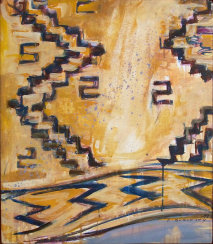
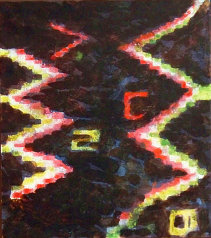
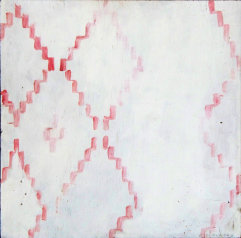
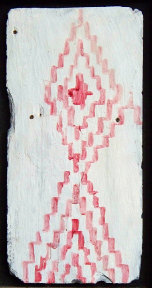
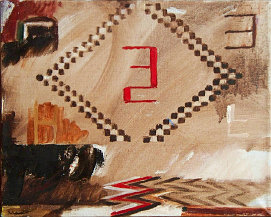
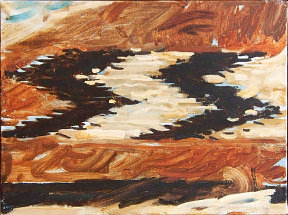
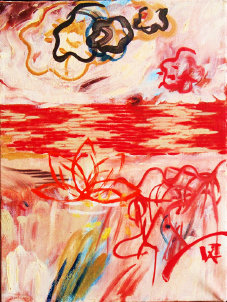
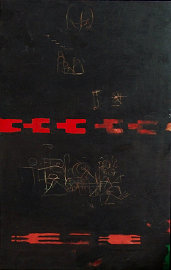
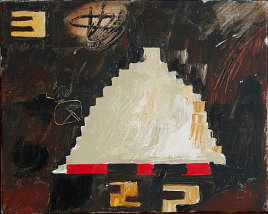
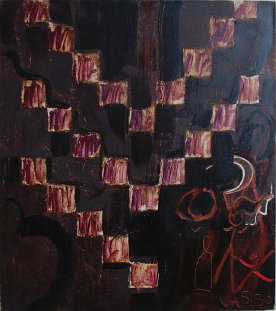
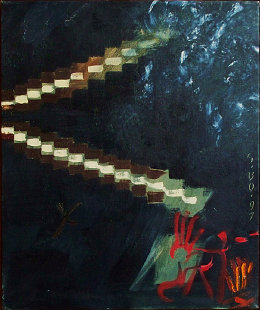
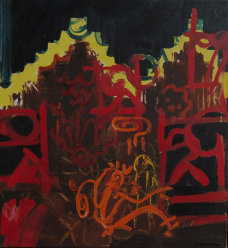
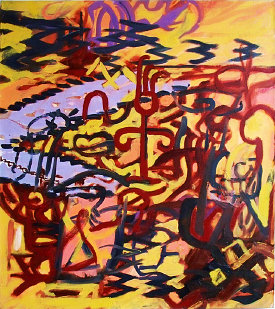
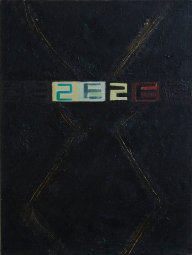
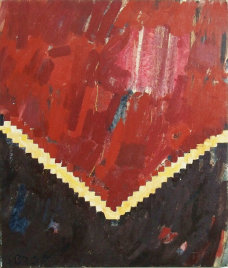
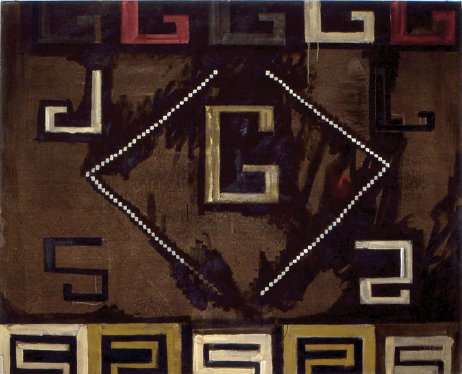
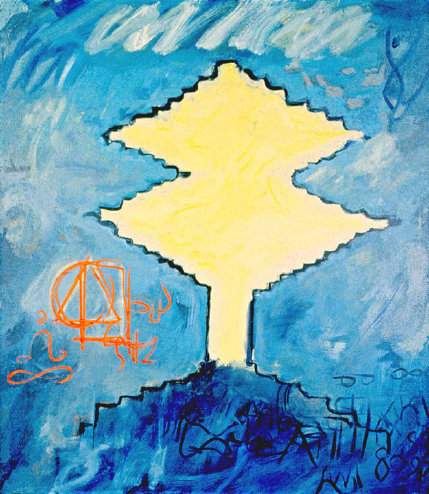
Scroll Down for Text:
CLICK ON
PAINTINGS
TO VIEW
INDIVID-
UALLY
PAINTINGS
TO VIEW
INDIVID-
UALLY
The "Mixtec Serape" paintings were created over a number of years, and serve, as a body of work, to chronical the steps, in thought, which the artist passed through as a formal style developed in his work. Experiments of 'approach', exercises for the brush, and expressive painterly instincts were all tried in these paintings.
When the first painting of a weaving was made, Borofsky was 'transitioning' from spray-paint back to oil, and looking for an equivelant "stylistic" transition. He was painting a series of portraits and figures in oil paint, using Gauguinesque models and incorporating the Mixtec serapes as background elements of pattern and design.
One day, a favorite model did not arrive to sit in front of the weaving which had already been hung up as a background for her. When the model failed to arrive, the artist decided to paint the background without her. "Painting of a Serape" was the result, and after that day the weavings became a common subject for Borofsky, serving, both as subject, as a background for calligraphy, and as stylistic inspiration for inventive improvisation.
The women who weave in the Sierra Mixteca are still using a visual language very similar in design elements to early Navajo weaving. A vocabulary of patterns and designs is generally shared by all, throughout a network of villages, while some individual weavers cannot resist the urge to try and invent new design elements, even trying experiments in drawing subjects such as trees, and writing messages with blocky letters and numbers, in the wool.
For these reasons, the weavings themselves have been enough, in some paintings, to be the subject. In others, the Mixtec designs have become backgrounds for improvisations involving the artist's vocabulary of visual symbols.
Borofsky, an admirer of traditionalJapanese aesthetic as much as pre-columbian design, finds the best of both in these weavings, the earthy palette of natural wool colors, the traditional technique and the strong, stark, graphic design.
For these reasons, the weavings themselves have been enough, in some paintings, to be the subject. In others, the Mixtec designs have become backgrounds for improvisations involving the artist's vocabulary of visual symbols.
Borofsky, an admirer of traditionalJapanese aesthetic as much as pre-columbian design, finds the best of both in these weavings, the earthy palette of natural wool colors, the traditional technique and the strong, stark, graphic design.
The "Serape Paintings" came chronologically after the "Stepped Mountain" for Borofsky and there is a sort of connection, in a simple design sense, between the 'stepped' sides of the rendered mountains and the 'stepped' diamond patterns in the Mixtec weavings. Thus, a simple stepped line, the design element inherent to weaving because of the'warp' and 'weave', had moved, in the artist's work, from being part of a "symbol"; to being
a descriptive element in a conceptual landscape; to being the"object" of a painting, as an expressive gesture or pattern; finally to suggesting 'new symbols' as an outgrowth of a personified "objectness".
In the end, a painting captures the concsciousness of it's creator at the time of it's inception, developement and conclusion. A poetic moment of reflection, or a burst of exuberance in the heart; an instant of personal vision, or an emotional memory from an experience, could be the impetus for the "coming about" of an artwork. It must have something we all recognise and feel.
In the end, a painting captures the concsciousness of it's creator at the time of it's inception, developement and conclusion. A poetic moment of reflection, or a burst of exuberance in the heart; an instant of personal vision, or an emotional memory from an experience, could be the impetus for the "coming about" of an artwork. It must have something we all recognise and feel.
Since the first people gathered reeds by the river and plaited them into small baskets and clothing, watching the movements of nature and wanting to express what they saw in what they made, there has been a human language of expression in weaving, for every culture. In the "Serape Paintings", the artist explores some of the cerebral avenues leading from basic and traditional design elements in weaving, towards a 'visual language common to all people', his stated goal of exploration.
The "Serape Series" Installation explores the use of an historical and rare cultural tradition, discovered and collected by an artist, in the artist's work, as a conduit for change and stylistic evolution representing common codification and personal clarification in visual language developement.
click on paintings to view separately
SCROLL DOWN
FOR
TEXT
FOR
TEXT
CLICK ON
PAINTINGS
TO VIEW
INDIVID-
UALLY
PAINTINGS
TO VIEW
INDIVID-
UALLY
CLICK ON
PAINTINGS
TO VIEW
INDIVID-
UALLY
PAINTINGS
TO VIEW
INDIVID-
UALLY